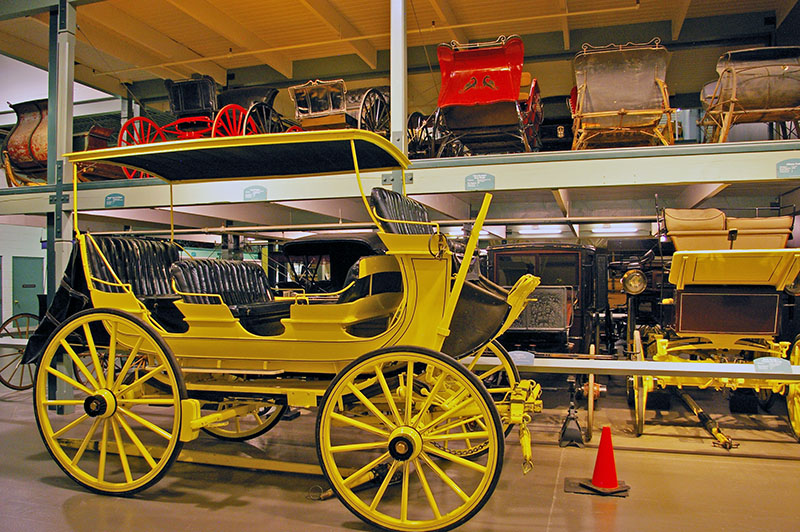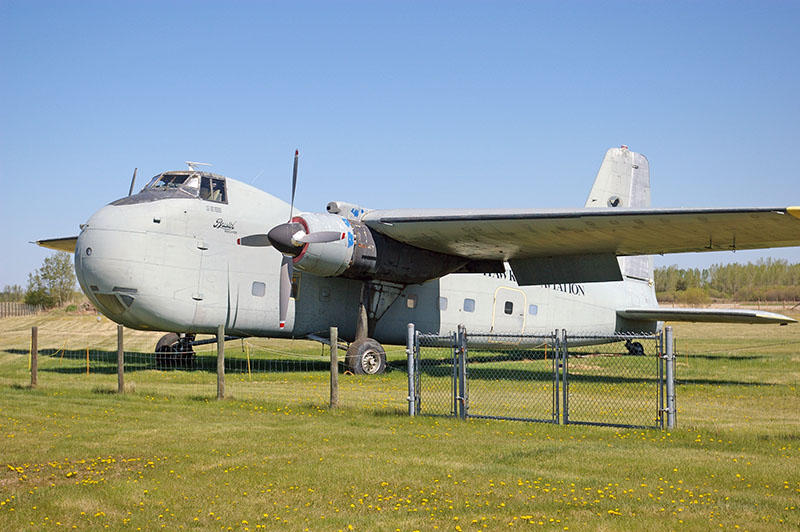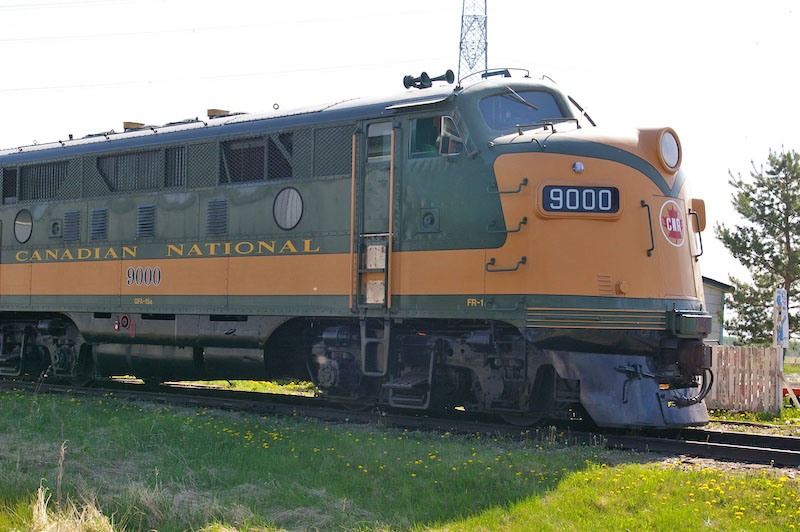
Description: The objects in the collections of these museums define the theme: cars, trucks, trains and airplanes that were used in Alberta and subsequently preserved and restored by Albertans, usually men. These museums are often managed and staffed by retired local men, who volunteer to work in the collections, sometimes as an extension of their former employment, or in more serious pursuit of a previous hobby. These dedicated volunteers remain active in the community by undertaking volunteer work that nevertheless retains links with traditional forms of masculinity. Other museums, including The Torrington Gopher Hole Museum, feature the work of the women who founded and now run the organization, particularly in the hand-sewn clothes worn by the stuffed gophers, and in the knitted crafts for sale in the small gift shop.



Featured Museum
Remington Carriage Museum

Click the image for more photos of Remington Carriage Museum
Operated by the provincial government, the Remington Carriage Museum bears many similarities to the Reynolds-Alberta Museum near Wetaskiwin – in its content, its organizing principles, even in its collection. Both are also based on what were once private collections, later donated to the province. The main interpretive spaces even look strikingly similar, with low ambient light, highly professional displays, didactic panels, touch screens and videos. Towards the back is a warehouse-style storeroom with two levels full of carriages, a unique solution to displaying the rest of the collection. This area is also open to visitors and chock-full of didactic texts. In the main space, exhibits are devoted to the construction of carriages, their marketing as consumer products, traffic congestion problems, and even early competition with automobiles. Most of the carriages on display also have a clear provenance, though not always local, and many are displayed with high-quality horse mannequins. One carriage is drawn by real horses and provides short tours of the grounds for visitors.
One major difference between the Remington and the Reynolds is in the portrayal of their respective founders. Don Remington hardly features at all in his titular museum, while Stan Reynolds is consistently valorized. Obviously men of very different temperaments and with starkly different reputations, the Remington manages to thread a narrative of local southern Alberta history within the larger narrative of developments in centres like New York and Paris.
The museum is a major tourist attraction in Cardston, also known for its impressive 1923 Mormon temple. There is also a historic courthouse, and the original log home of Charles Ora Card, who established the town in 1887. Another attraction, the Museum of Miniatures, relocated to Nanton a few years previously. Finally, there is a memorial to local resident Fay Wray, star of the original King Kong (1933).



Other Transportation Museums
Canadian Aviation Hall of Fame

Click the image for more photos of the Canadian Aviation Hall of Fame
Since 1992 the museum has partnered with the Reynolds-Alberta Museum, which is operated by the province, to share its site near Wetaskiwin. This provides it with ample space for both its indoor and outdoor exhibits, which include a wide variety of restored aircraft. Some of these craft have been specially prepared to show their inner construction and workings. The museum’s main feature is its series of biographical panels, each dedicated to and inductee of the hall of fame, and often including artifacts such as medals and uniforms. Established in 1974, the museum’s original home was much more modest: a basement mall connected to the Shaw Conference Centre in Edmonton, which precluded any full-size aircraft exhibits. Today the museum has grown to include a resources centre, a non-lending library with about 2500 books and over 10,000 periodicals.
Alberta
Railway Museum

Click the image for more photos of Alberta Railway Museum
The museum has an impressive collection of historic Albertan rolling stock, including steam and diesel engines, luxury sleepers, a mobile classroom, caboose, mail car, cooking car, and freight cars. Unlike many railway museums it has an indoor facility where restoration work can be done, although typically railway museums are forced to leave cars exposed to the weather, which complicates things and adds additional costs. About a dozen cars are open to the public with interior exhibits, some of which originate from Expo 86. A fully restored steam engine operates on long weekends, and rides are also available on a motorized maintenance car. The train station is St. Albert’s original station, which was relocated to the site near Fort Saskatchewan in 1973. It now houses a three room interpretive area with an artifact collection, as well as a gift shop. Railway museums seem to have the greatest obstacles as the financial resources and facilities needed for proper restoration and display of cars is quite expensive, while aerospace and other road vehicle museums tend to fare much better. In the past this discrepancy has not been highlighted as these types of museums are not usually compared directly.


 top of page
top of page












 top of page
top of page
